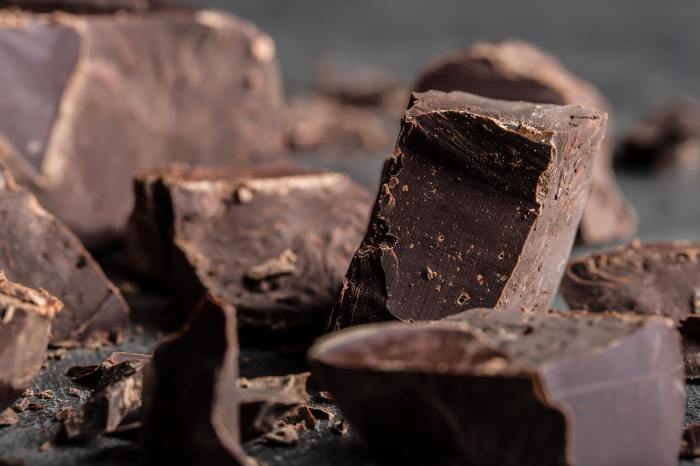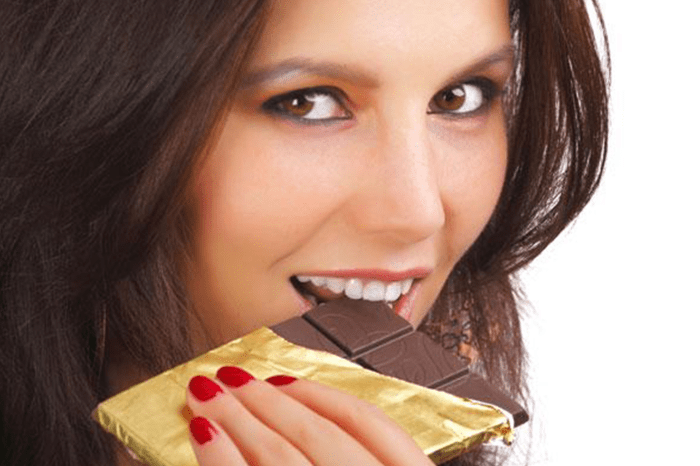The Science of Chocolate: Could Chocolate Get Healthier
Chocolate, a beloved treat enjoyed worldwide, is more than just a sweet indulgence. It’s a complex food with a fascinating history and a surprising range of potential health benefits. Understanding the science behind chocolate allows us to appreciate its nuances and make informed choices about its consumption.
The Chemical Composition of Chocolate
Chocolate’s unique flavor and texture stem from its intricate chemical composition. The primary ingredients are cocoa beans, sugar, and milk (in milk chocolate). Cocoa beans, the heart of chocolate, contain a variety of compounds, including:
- Theobromine: A stimulant similar to caffeine, but with a milder effect. It contributes to chocolate’s mood-boosting properties.
- Cocoa Flavanols: These potent antioxidants are responsible for many of chocolate’s purported health benefits. We’ll delve deeper into their effects in the next section.
- Fat: Chocolate contains a significant amount of fat, primarily in the form of stearic acid and oleic acid. These fats contribute to its creamy texture and flavor.
- Fiber: Cocoa beans are a good source of dietary fiber, which aids digestion and promotes satiety.
- Minerals: Chocolate contains small amounts of essential minerals like iron, magnesium, and potassium.
The addition of sugar and milk significantly alters the nutritional profile of chocolate. Sugar provides sweetness, but also increases the overall calorie content. Milk adds calcium and protein, but also contributes to the fat and sugar content.
The Benefits of Cocoa Flavanols
Cocoa flavanols are the real stars of the show when it comes to chocolate’s potential health benefits. These potent antioxidants have been linked to a variety of positive effects on the body, including:
- Improved Blood Pressure: Studies have shown that cocoa flavanols can help lower blood pressure, both systolic and diastolic. This effect is attributed to their ability to relax blood vessels and improve blood flow.
- Enhanced Blood Flow: Cocoa flavanols have been shown to improve blood flow to the brain and other organs, potentially reducing the risk of cardiovascular disease. This effect is thought to be related to their ability to increase nitric oxide production, a molecule that relaxes blood vessels.
- Cognitive Function: Some studies suggest that cocoa flavanols may enhance cognitive function, particularly in older adults. They may improve memory, attention, and processing speed. This effect is likely due to their ability to protect brain cells from damage and improve blood flow to the brain.
Nutritional Comparison of Chocolate Types
The nutritional content of chocolate varies significantly depending on the type. Here’s a comparison of dark chocolate, milk chocolate, and white chocolate:
| Type | Cocoa Solids (%) | Sugar (%) | Fat (%) | Flavanol Content |
|---|---|---|---|---|
| Dark Chocolate (70% or higher) | 70% or higher | Lower | Lower | High |
| Milk Chocolate | 30-40% | Higher | Higher | Lower |
| White Chocolate | 0% | Very High | High | Very Low |
As you can see, dark chocolate generally has the highest cocoa solids content and the lowest sugar and fat content. This means it’s the most nutrient-rich and contains the highest levels of cocoa flavanols. Milk chocolate contains less cocoa solids and more sugar and fat, while white chocolate contains no cocoa solids at all and is primarily made of sugar and cocoa butter.
Healthier Chocolate Alternatives
While we’ve explored the potential health benefits of dark chocolate, many of us crave the sweet indulgence of milk chocolate or white chocolate. Fortunately, there are several healthier alternatives available that can satisfy our cravings without compromising our health goals.
Types of Chocolate and Their Health Benefits
Let’s delve into the world of chocolate and understand the potential health benefits and drawbacks associated with different cocoa percentages.
| Type of Chocolate | Cocoa Percentage | Health Benefits | Drawbacks |
|---|---|---|---|
| Dark Chocolate | 70% or higher | Rich in antioxidants, may improve heart health, lower blood pressure, and enhance cognitive function. | High in calories and fat, may contain added sugar. |
| Milk Chocolate | 30-50% | Lower in antioxidants compared to dark chocolate, may provide some heart health benefits. | High in sugar, fat, and milk solids, can contribute to weight gain. |
| White Chocolate | 0% cocoa solids | Not considered a health food, lacks the antioxidants found in dark chocolate. | High in sugar, fat, and milk solids, can contribute to weight gain. |
Healthier Chocolate Alternatives
Choosing healthier chocolate alternatives can help you enjoy your favorite treat while minimizing the potential drawbacks.
- Dark Chocolate with Added Antioxidants: Look for dark chocolate with added antioxidants like resveratrol or grape seed extract. These antioxidants can further enhance the health benefits of dark chocolate.
- Sugar-Free Chocolate: Sugar-free chocolate is made with artificial sweeteners, reducing the sugar content and calorie intake. However, it’s important to note that artificial sweeteners can have their own health implications.
- Chocolate Made with Alternative Sweeteners: Consider chocolate made with natural sweeteners like stevia or erythritol. These sweeteners are generally considered healthier than sugar but may have a different taste profile.
Comparing Nutritional Profiles
Let’s compare the nutritional profiles of traditional chocolate and its healthier alternatives:
- Traditional Chocolate: Typically high in calories, sugar, and fat. The exact nutritional profile varies depending on the type of chocolate and the ingredients used.
- Dark Chocolate with Added Antioxidants: Offers similar nutritional benefits as dark chocolate but may have slightly higher calorie content due to the added antioxidants.
- Sugar-Free Chocolate: Lower in calories and sugar compared to traditional chocolate but may contain artificial sweeteners.
- Chocolate Made with Alternative Sweeteners: Lower in sugar and calories compared to traditional chocolate, but the nutritional profile may vary depending on the specific alternative sweetener used.
Chocolate Consumption and Health
While chocolate offers numerous health benefits, excessive consumption can lead to negative consequences due to its high sugar and fat content. This section delves into the potential risks of consuming large amounts of chocolate, exploring its relationship with heart health and examining the impact of chocolate consumption on cognitive function, mood, and overall well-being.
Potential Risks of Excessive Chocolate Consumption
Consuming large amounts of chocolate can contribute to several health issues due to its high sugar and fat content.
- Weight Gain: Chocolate is calorie-dense, and excessive consumption can lead to weight gain, particularly if it replaces healthier food choices.
- Increased Risk of Chronic Diseases: High sugar intake is linked to an increased risk of developing chronic diseases such as type 2 diabetes, heart disease, and some types of cancer.
- Dental Problems: The sugar in chocolate can contribute to tooth decay, especially if consumed frequently.
- Headaches: Some individuals experience headaches after consuming chocolate, particularly those sensitive to caffeine or other compounds present in chocolate.
Chocolate Consumption and Heart Health
The relationship between chocolate consumption and heart health is complex and multifaceted.
- Potential Benefits: Dark chocolate, particularly those with high cocoa content (70% or higher), contains flavonoids, which are antioxidants that may improve blood flow, lower blood pressure, and reduce the risk of blood clots.
- Potential Risks: However, chocolate also contains saturated fat and sugar, which can negatively impact heart health if consumed in excess.
Impact of Chocolate Consumption on Cognitive Function, Mood, and Well-Being, Could chocolate get healthier
Research suggests that moderate chocolate consumption may have positive effects on cognitive function, mood, and overall well-being.
- Cognitive Function: Some studies indicate that chocolate consumption may improve cognitive function, including memory, attention, and processing speed.
- Mood: Chocolate contains compounds like theobromine and phenylethylamine, which have mood-boosting effects.
- Overall Well-being: The combination of flavonoids, theobromine, and other compounds in chocolate may contribute to a sense of well-being and relaxation.
The Future of Chocolate
The future of chocolate is looking bright, with advancements in technology, sustainability, and health consciousness paving the way for a more delicious and responsible future. The industry is undergoing a transformation, driven by consumer demand for ethical sourcing, healthier options, and innovative flavors.
Sustainable and Ethical Chocolate Sourcing
The demand for ethically sourced chocolate is increasing, pushing the industry to adopt sustainable practices. This involves ensuring fair wages for farmers, protecting biodiversity, and minimizing the environmental impact of chocolate production. Several initiatives are underway to address these concerns, including:
- Fair Trade Certification: This certification ensures that farmers receive a fair price for their cocoa beans, promoting sustainable farming practices and improving the livelihoods of cocoa farmers. Examples of Fair Trade certified chocolate brands include Divine Chocolate, Tony’s Chocolonely, and Green & Black’s.
- Organic Certification: Organic certification guarantees that cocoa beans are grown without the use of synthetic pesticides, herbicides, or fertilizers, promoting a healthier environment and reducing the risk of chemical contamination. Some popular organic chocolate brands include Endangered Species Chocolate, Alter Eco, and Theo Chocolate.
- Tree-to-Bar: This movement emphasizes transparency and traceability throughout the chocolate supply chain, from the cocoa tree to the finished product. Companies that follow this model often have direct relationships with farmers, allowing them to control the quality and sustainability of their cocoa beans. Examples of tree-to-bar chocolate makers include Mast Brothers Chocolate, Dandelion Chocolate, and Guittard Chocolate.
Advancements in Chocolate Technology
Technological advancements are transforming the way chocolate is made, leading to healthier and more sustainable options. Some of these innovations include:
- 3D Printing: 3D printing technology allows for the creation of complex chocolate designs and shapes, enabling the development of innovative textures and flavors. This technology also offers the potential for personalized chocolate creations, tailored to individual preferences.
- Plant-Based Chocolate: The rise of veganism and plant-based diets has driven the development of chocolate alternatives made from ingredients like cashew butter, coconut oil, and other plant-based sources. These alternatives often have a lower sugar content and a reduced environmental footprint compared to traditional chocolate.
- Sugar Reduction: Researchers are working on innovative ways to reduce the sugar content of chocolate without compromising its taste or texture. This includes using natural sweeteners like stevia and monk fruit, as well as exploring alternative sugar structures that have a lower glycemic index.
Future Directions of Chocolate Production and Consumption
| Factor | Potential Future Direction | Example |
|---|---|---|
| Sustainability | Increased adoption of sustainable farming practices, such as agroforestry and shade-grown cocoa, to protect biodiversity and improve soil health. | The Cocoa Horizons Foundation, a non-profit organization, is working with cocoa farmers to implement sustainable practices that promote biodiversity and improve livelihoods. |
| Health | Development of chocolate with reduced sugar content, increased fiber, and added antioxidants, offering healthier alternatives for consumers. | Some chocolate brands are already offering sugar-free and dark chocolate options with higher cocoa content, providing healthier choices for consumers. |
| Innovation | Emerging technologies, such as 3D printing and plant-based chocolate, will create new and exciting chocolate experiences, catering to diverse consumer preferences. | Companies like Choc Edge are using 3D printing technology to create personalized chocolate creations, while brands like “The Vegan Kind” are offering a wide range of plant-based chocolate options. |
So, could chocolate get healthier? The answer is complex, but the future looks promising. By understanding the science behind chocolate, choosing healthier alternatives, and embracing sustainable practices, we can enjoy chocolate responsibly while potentially reaping its health benefits. Remember, moderation is key, and indulging in chocolate in a mindful way can be a part of a healthy and balanced lifestyle.
So, could chocolate actually get healthier? Maybe! After all, HBO Now streaming service will cost 15 per month expected in april , which means we’ll all have a little more money for those dark chocolate squares. And hey, if they can make a healthy version of something as delicious as chocolate, who knows what else is possible?
 Standi Techno News
Standi Techno News

